Solar eclipse of May 31, 2003
| Solar eclipse of May 31, 2003 | |
|---|---|
|
Partial from Florenville, Belgium | |
 Map | |
| Type of eclipse | |
| Nature | Annular |
| Gamma | 0.996 |
| Magnitude | 0.9384 |
| Maximum eclipse | |
| Duration | 217 sec (3 m 37 s) |
| Coordinates | 66°36′N 24°30′W / 66.6°N 24.5°W |
| Max. width of band | - km |
| Times (UTC) | |
| Greatest eclipse | 4:09:22 |
| References | |
| Saros | 147 (22 of 80) |
| Catalog # (SE5000) | 9515 |
An annular solar eclipse occurred on May 31, 2003. A solar eclipse occurs when the Moon passes between Earth and the Sun, thereby totally or partly obscuring the image of the Sun for a viewer on Earth. An annular solar eclipse occurs when the Moon's apparent diameter is smaller than the Sun's, blocking most of the Sun's light and causing the Sun to look like an annulus (ring). An annular eclipse appears as a partial eclipse over a region of the Earth thousands of kilometres wide. Annularity was visible across central Greenland and northern Scotland. Partiality was visible throughout Europe, Asia, and far northwestern Canada.
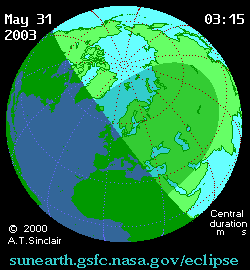
Images
Related eclipses
Solar eclipses 2000-2003
Each member in a semester series of solar eclipses repeats approximately every 177 days and 4 hours (a semester) at alternating nodes of the Moon's orbit.
Note: Partial solar eclipses on February 5, 2000 and July 31, 2000 occur in the previous lunar year set.
| Solar eclipse series sets from 2000–2003 | ||||
|---|---|---|---|---|
| Ascending node | Descending node | |||
| Saros | Map | Saros | Map | |
| 117 | July 1, 2000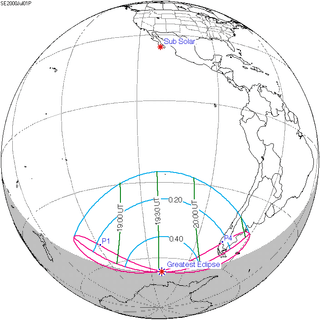 Partial (south) |
122 | December 25, 2000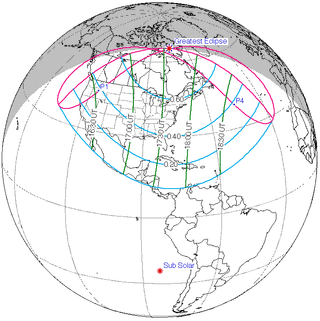 Partial (north) | |
127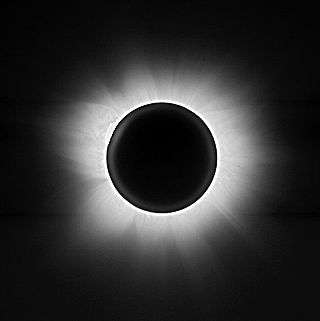 Totality from Lusaka | June 21, 2001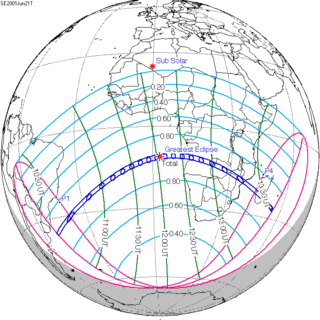 Total |
132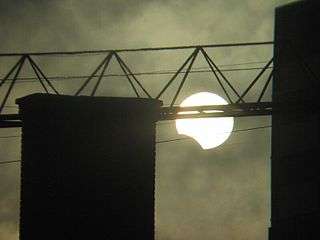 Partial from Minneapolis | December 14, 2001 Annular | |
137.jpg) Partial from Los Angeles | June 10, 2002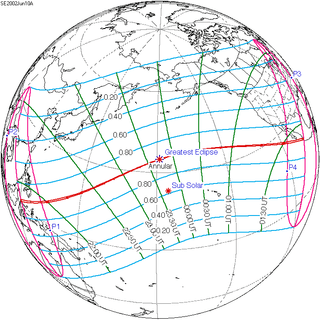 Annular |
142 Totality from Woomera, SA | December 4, 2002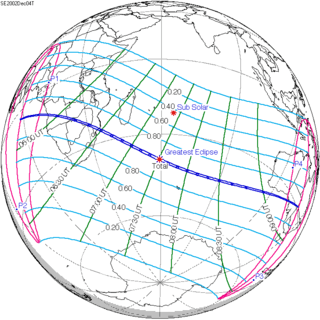 Total | |
147 Partial from Belfort | May 31, 2003 Annular |
152 | November 23, 2003 Total | |
Metonic series
The metonic series repeats eclipses every 19 years (6939.69 days), lasting about 5 cycles. Eclipses occur in nearly the same calendar date. In addition the octon subseries repeats 1/5 of that or every 3.8 years (1387.94 days).
| 21 eclipse events between August 12, 1942 and August 11, 2018 | ||||
|---|---|---|---|---|
| August 10-12 | May 30 | March 18 | January 4-5 | October 23-24 |
| 115 | 117 | 119 | 121 | 123 |
 August 12, 1942 |
 May 30, 1946 |
 March 18, 1950 |
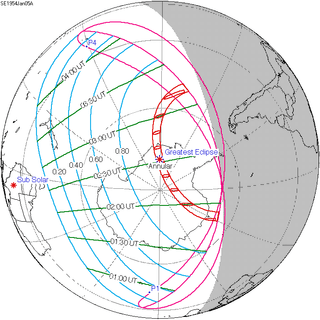 January 5, 1954 |
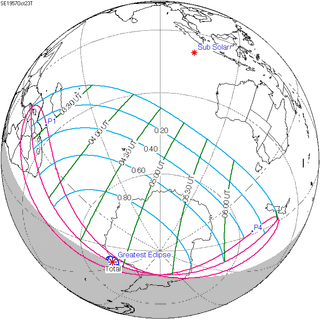 October 23, 1957 |
| 125 | 127 | 129 | 131 | 133 |
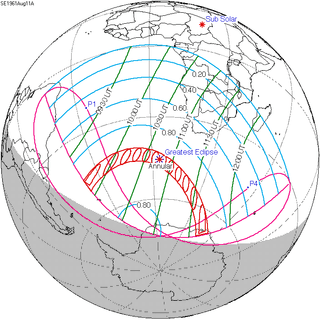 August 11, 1961 |
 May 30, 1965 |
 March 18, 1969 |
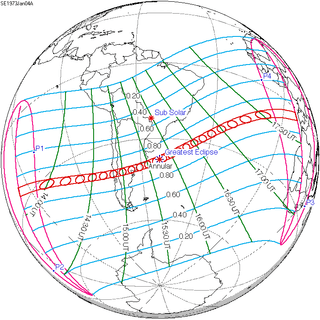 January 4, 1973 |
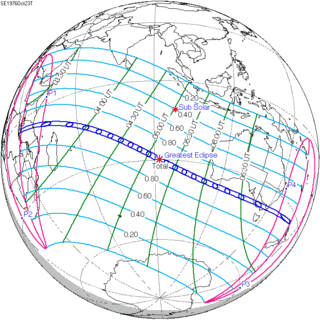 October 23, 1976 |
| 135 | 137 | 139 | 141 | 143 |
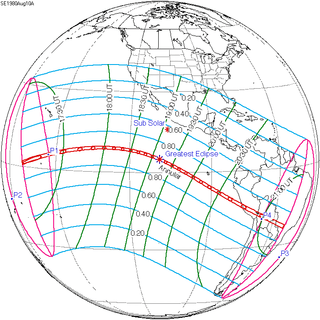 August 10, 1980 |
 May 30, 1984 |
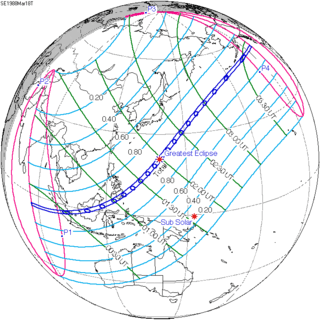 March 18, 1988 |
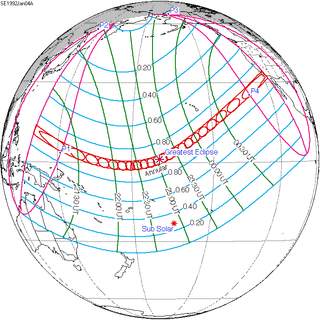 January 4, 1992 |
 October 24, 1995 |
| 145 | 147 | 149 | 151 | 153 |
 August 11, 1999 |
 May 31, 2003 |
 March 19, 2007 |
 January 4, 2011 |
 October 23, 2014 |
| 155 | ||||
 August 11, 2018 | ||||
See also
Notes
References
- Earth visibility chart and eclipse statistics Eclipse Predictions by Fred Espenak, NASA/GSFC
Photos:
- Spaceweather.com solar eclipse gallery
- Czech Republic. Prof. Druckmüller's eclipse photography site
- Eclipse in the Mist, APOD 6/4/2003, Dawn partial from Charneux, Belgium
- Ring of Fire from Cape Wrath, APOD 6/5/2003, Annular eclipse from Cape Wrath, northwestern coast of Scotland
- Sun, Moon, Hot Air Balloon, APOD 6/6/2003, partial eclipse from Bonn, Germany
- Clouds and the Moon Move to Block the Sun, APOD 6/18/2003, partial eclipse from Vienna, Austria
- Photos of solar eclipse around the world
| Wikimedia Commons has media related to Solar eclipse of 2003 May 31. |
.jpg)



